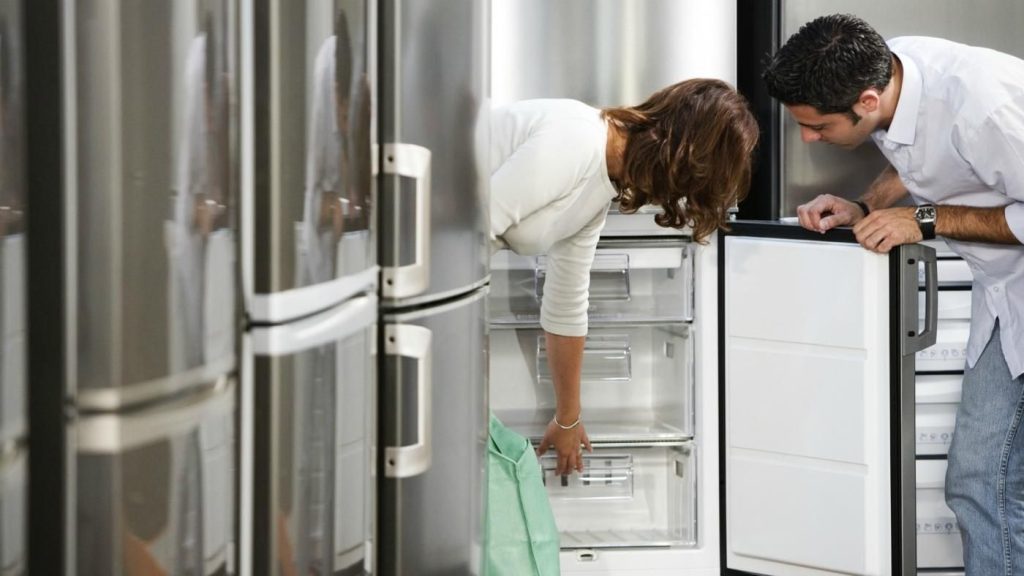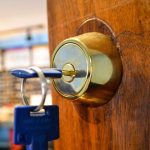RV refrigerator repair is a process of elimination that involves checking the power to the unit, 120V and propane system functionality. This is a great DIYer’s project and one that almost any person can do.
If you can smell ammonia or see traces of yellow/green powder around the burner assembly area of an absorption refrigerator, it’s time to call the pros.
1. Thermocouple
A thermocouple translates temperature energy into an electrical signal that can be acted upon. It consists of two wires that are made up of dissimilar metals. One end of each is connected to the point where temperature needs to be measured. The other end is connected to a reference junction.
The thermocouple detects heat from the gas burner and sends a signal to the refrigerator’s circuit board to open the LP gas valve. The gas burner pilot light lights and stays lit if the thermocouple is working properly.
Thermocouple problems can be difficult to diagnose and repair. If you suspect your RV refrigerator’s thermocouple is bad, unplug the fridge and feel the burner tube / absorber area for heat. If it’s very hot or you smell ammonia, the thermocouple is leaking and will need to be replaced. Often times, rust droplets can fall into the burner tube and foul it. This can cause the flame to flicker and not stay lit.
2. Condensate Drain Pipe
The condensate drain line is responsible for funneling moisture from the refrigerator and freezer to a drain pan of some sort. This helps protect the food storage area from rot and water siphoning out through the access panel.
These lines often terminate to a trap or downspout that then flows to an approved area outside the home. This may be a drip pan or to a gutter and downspout system that then carries the drainage into the ground.
During routine maintenance, you should regularly inspect and clean the drain lines to ensure that they are free of clogs or blockages. It’s best to keep a garden hose handy to quickly flush the drain line with high pressure in short bursts.
This will quickly remove a lot of the clog material and help prevent a backup into your refrigerator. This is an easy fix that almost any RV owner can do themselves. Keeping the RV level when parked, regularly cleaning the vents and making sure there are no blockages will also go a long way to avoiding rv fridge repair issues in the future.
3. Electrical Issues
RV Refrigerators need a mixture of 12-volt direct current (DC) from the coach battery, propane and 120-volt alternating current (AC) from shore power or a generator to operate. When the fridge doesn’t run on one of these sources, it can be frustrating.
The first thing to check is the breaker that controls the fridge. If it’s tripped, then the fridge won’t work on electricity and will automatically switch over to propane. Resetting the breaker should fix this problem.
If the breaker doesn’t trip, then it could be a problem with the fridge’s heating element or the refrigerator circuit board. Both of these issues are more serious and will likely require professional attention.
Sometimes the simplest things are the most overlooked. Keeping your RV clean and making sure the ducts are clear can prevent some of the most common problems. It’s also a good idea to run your RV fridge on propane for a few hours to make sure it works before calling in a pro.
4. Fault Codes
RV fridges are very complex pieces of machinery. They use a variety of cooling methods including electrical and propane. Because of this, they can be susceptible to a number of issues that make them not cool. These issues can range from tripped breakers to faulty heating elements and control boards. Luckily, most of these issues can be fixed by following some simple steps.
For example, if the fridge works fine when plugged into 110V power but not when using propane it may be because the refrigerator’s evaporator is leaking. To fix this issue, it is important to clean all the vents and openings around the fridge to ensure nothing is blocking it.
Moreover, if you see the refrigerator display light up with a RED light that is either steady or flashing, this means that there is an internal problem that can only be resolved by a Norcold authorized repairman. Therefore, it is crucial to understand these error codes to avoid getting ripped off by a repairman.


